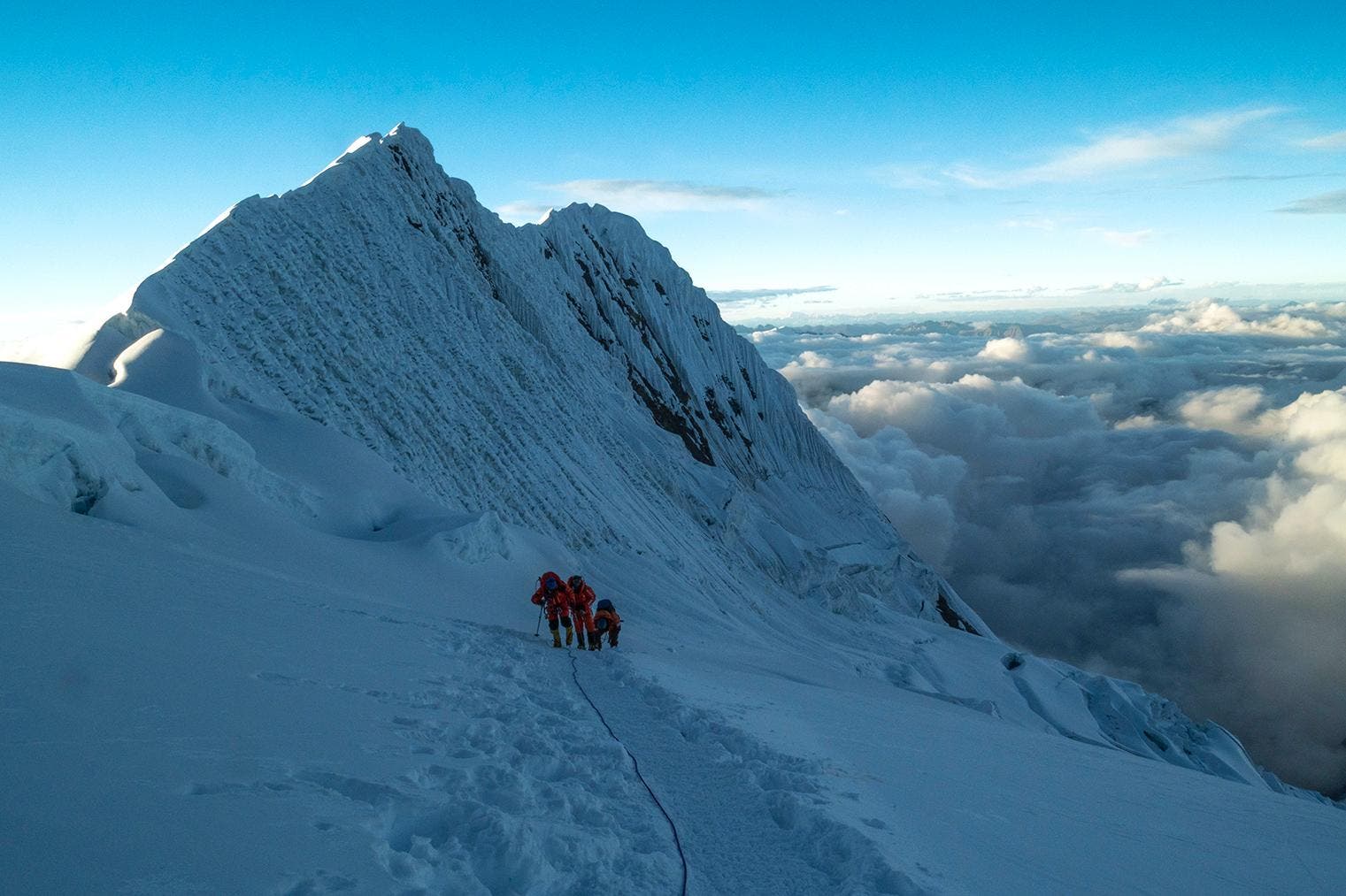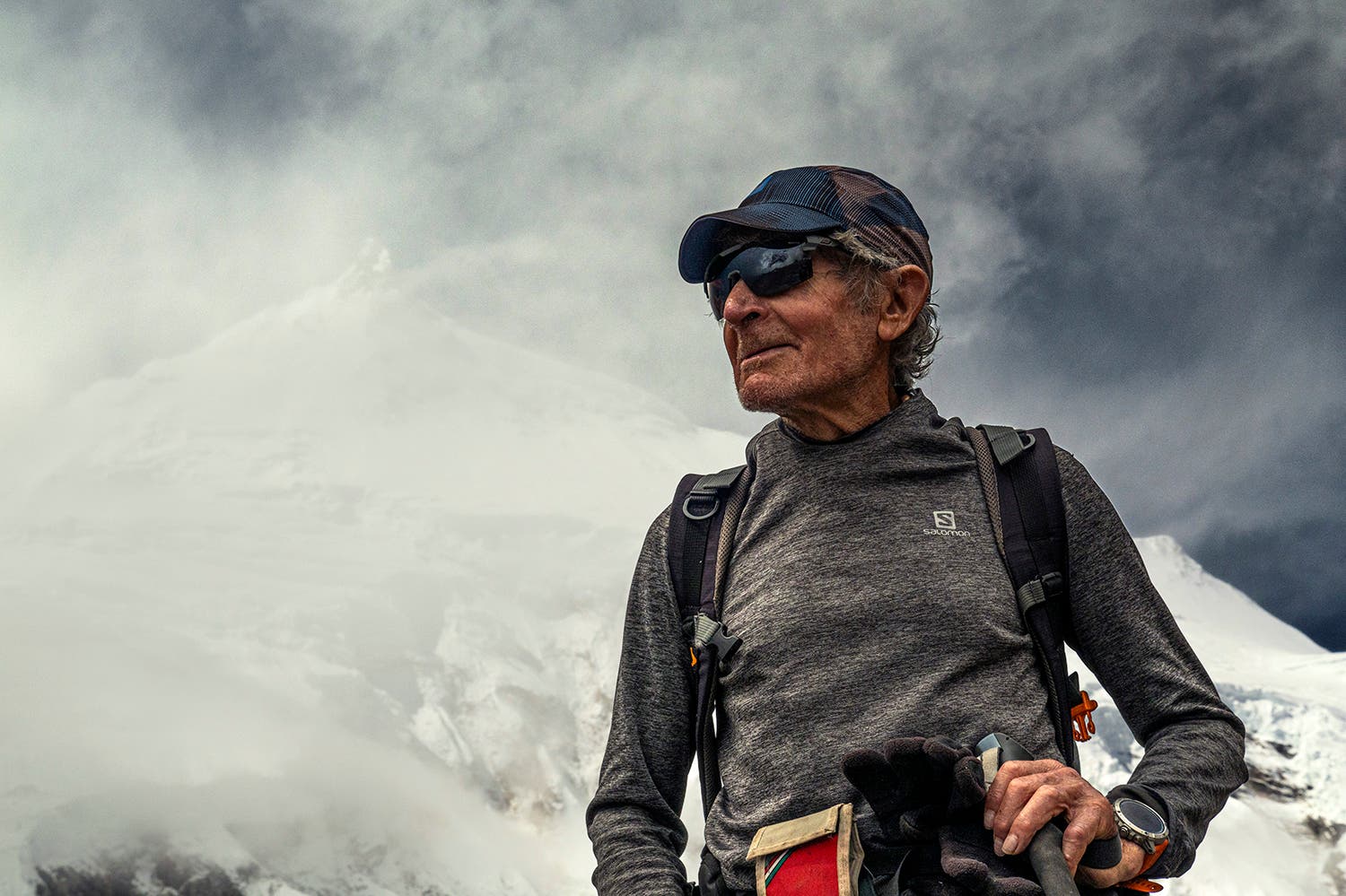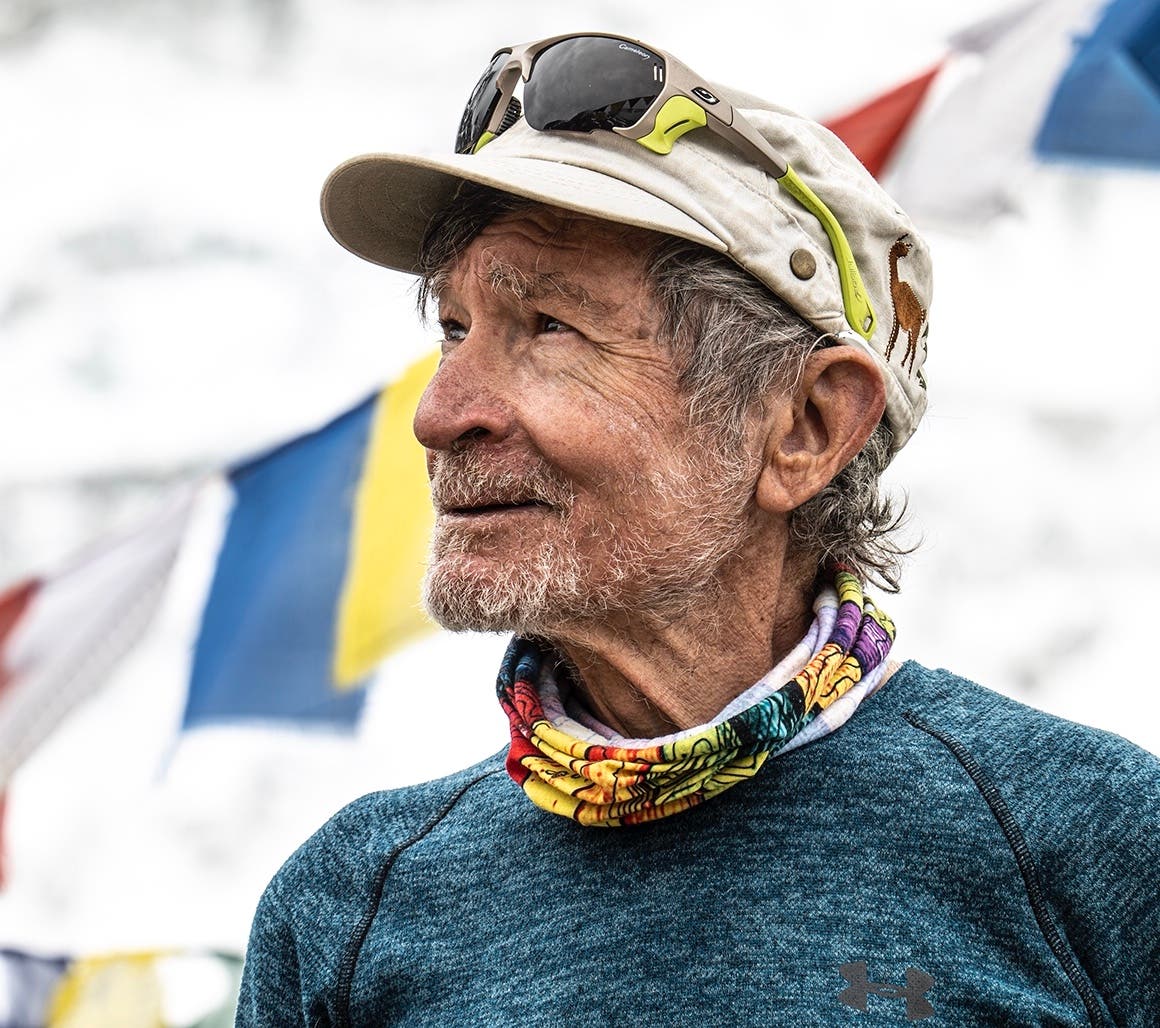An 86-Year-Old Just Became Oldest to Summit One of the Worldãs Highest Peaks

(Photo: Luis Miguel Loäpez Soriano)
For , Manaslu is an old friend.
Early on the morning of September 26, the 86-year-old Spanish alpinist trudged to the top of the 8,163-meter (26,782-foot) mountain, making history as the oldest person ever to reach the top of a peak over 8,000 meters. He was accompanied by longtime photographer and close friend Luis Miguel Loäpez Soriano, and Sherpas Mikel, Nima, and Phurba.
It was a poignant moment for Soria, and not just because of the record. He has a longer relationship with this mountain than perhaps any climber alive today. He first reached in 2010 at 71, but he was also a member of the very first Spanish expeditions to the peak, in 1973 and 1975. But Soria didnãt touch the summit on those trips. The first expedition was forced to turn back due to adverse weather conditions. On the second, he acted as a designated rope fixer.
Last week, Soria and his team summited Manaslu relatively quickly and without any significant hurdles. After their final acclimatization rotation, they pushed from basecamp to the summit in just three days. But on the steep, icy descent to Camp III, the climb took a turn for the worse. Soriaãs legs have been a weak point in recent yearsãhe underwent a knee replacement in 2018 and severely broke his leg on Dhaulagiri in 2023. By the time he reached Camp III, he was in severe pain, and his balance and coordination were suffering as a result.
Ultimately, he opted for a helicopter evacuation to basecamp to ensure his injuries didnãt worsen.ãIf I tried to come down walking, I could cause everyone else problems,ã he said. ãCarlos wanted to keep himself safe, but also to keep the rest of us safe, everyone else in his team,ã his photographer, Soriano, added.

ãI Feel Good up Thereã
Climbing an 8,000-meter peak, in any decade of life, is an impressive feat, but Carlos Soria has now summited a dozen of the worldãs 14 highest summits, most of them in his 60s, 70s, and 80s. He is the only person, in fact, to climb 10 8,000-meter peaks after the age of 60.
It begs the question: Why?
At an age when most individuals are bouncing grandkids on their kneesãif their knees even functionãSoria returns, time and time again, to the most inhospitable regions on Earth, to test himself.
ãI do not care about records,ã he told me. ãI am not looking to be ãthe best.ãã He also does not seem particularly concerned with the usual Himalayan mountaineering shenanigans, like sponsorships and motivational speaking tours. In recent years, he has self-financed many of his expeditions. Instead, he is simply drawn to climb. ãThe mountains are the place I want to be,ã he said. ãI always want to come back.ã
Soria began finding solace in the mountains as a child. He was born in AvilûÀ, Spain in 1939. It was a rather inauspicious yearãthe last of the Spanish Civil War, and first of brutal dictator Francisco Francoãs 36-year rule. ãIt was a very difficult time to be in Spain,ã he told me. ãMy family was poor. We didnãt have hot water, we rarely had electricity.ã

At age 14, Soria began climbing, exploring the Sierra de Guadarrama range just outside Madrid. ãIn the mountains, in nature, I found a way to escape that life, to find beauty again,ã he said. ãThatãs why Iãve kept coming back. I felt good there at 14, and I feel good there at 86.ã
At 86, maintaining oneãs health is an uphill battle. But Soriaãs regime is not dissimilar to that of any other climber. He doesnãt touch alcohol or tobacco, and heãs a clean eater. He also spends every morning working out, seven days a week. But the trick, he said, isnãt checking all these boxes. Itãs to enjoy the training as much as the climbing. ãI really like training,ã he told me. ãI train when I have expeditions coming, and I train when I donãt. It doesnãt matter.ã In recent years, heãs become a fan of indoor rock climbing, too. At 7:00 a.m., almost every day, Soria can be found roped up at a climbing gym near his house.
Everything in the mountains is harder at his age. His mobility, balance, strength, and stamina are all waning. Itãs harder for him to catch his breath, harder for him to get food down. His list of old injuries has only grown as the years have gone on. Soriaãs approach is to take things slow and to err on the side of caution. When I asked him what was going through his mind when he took those final steps up to the summit of Manaslu, he answered simply: ãI was focused on reaching the summit.ã
And what was he thinking when he was finally up there, standing on one of the worldãs highest mountains, the oldest person ever to climb an 8,000-meter peak?
ãI was thinking about coming down safely,ã he said. ãI was happy, yes. But I wanted to make sure my team and I got down without problems.ã
ãIf We Didnãt Change, We Wouldnãt Be Aliveã
The only 8,000-meter peaks Soria has yet to summit are Dhaulagiri and Shishapangma, but not for lack of trying. Soria has retreated from Nepalãs Dhaulagiri a staggering 14 times. Itãs also where he broke his leg in 2023ãthough the injury resulted not from his own mistake, but from a Sherpa slipping and falling into him. ãDhaulagiri is not the most difficult, but the weather is unstable and hard to predict,ã he said. ãStorms come fast from the valley.ã Soria also lost a close friend on the mountain during one of his earliest attempts. Since then, he has been extremely cautious in his approach. ãI have a lot of respect for that mountain,ã he said.

Perhaps no one is better positioned to bemoan the commercialization of high-altitude mountaineering than Carlos Soria. In his early days an alpinist, 8,000-meter peaks represented isolated, remote objectivesãtrue wilderness. Back then, a single team coming together to put a pair of climbers on a summit incited national celebration. Within his lifetime, many of these peaks have become jam-packed thoroughfares. Hundreds of guided climbers may tick a summit in the space of a few days.
ãWe were totally alone in those times,ã Soria said of his trips to Manaslu in the 1970s. ãIt was very different. We were the only expedition on the mountain. From the gear and apparel we used to the style in which we approached the mountains, many things have changed today.ã
But Soria says he isnãt nostalgic for years past, and he wonãt speak ill of mountaineering, then or now. ãThings have to change in this world,ã he told me. ãWe cannot worry or be sad. Change is life.ã
Many positive changes have also materialized, as Soria sees it. More young people are coming to the mountains, including more women and people from diverse ethnic backgrounds.
ãI donãt think the past is better, or worse,ã he explained. ãI am happy. I like to change with the times. If things didnãt change, if we didnãt change, then we would not be alive.ã
In photographs, Soria often wears a wry, knowing smile, as though he harbors some hidden wisdom, some eternal secret, that the rest of us canãt quite seem to figure out. Wondering if I could chip out some of that secret, I asked for his most important piece of advice for anyone who dreams of climbing 8,000-meter peaks. Soria was clear. Itãs not training hard or gaining experience. Those things are necessary, but they come later. First, ãYou have to love it,ã he said. ãYou have to love climbing.ã
You canãt be up there for the social media posts, the records, or the sponsors. You canãt be up there for the feeling you get when youãre back at home, bragging to your friends at the bar. ãIf you love it, then you will naturally do it right,ã Soria said. ãYou will train, you will acquire the necessary experience, because you love it. And then, if climbing 8,000 meters is your dream, you can achieve it.ã

About the photographer: , who accompanied Soria on his climb, is a Spanish videographer and photographer who has climbed several of the worldãs 8,000-meter peaks. Follow along